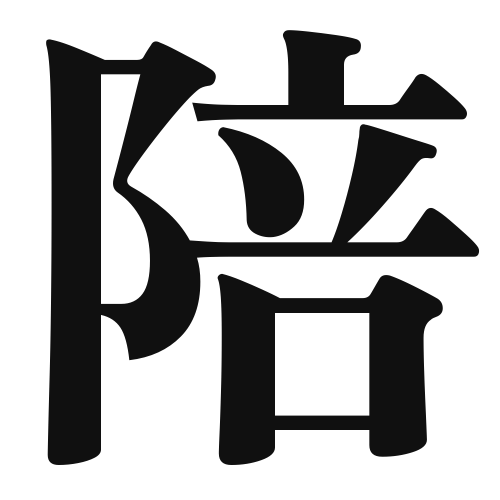1. Overview of Meaning
The kanji “陪” (pronounced “bai” in Japanese) generally means “to accompany” or “to assist.” It conveys the idea of being alongside someone or something, often in a supportive role.
2. Formation and Radical
Formation of the Kanji: The kanji “陪” is a compound character, which means it is formed by combining different elements. It is classified as a compound ideograph (会意文字), as it combines the meanings of its components to convey a new idea.
Radical: The radical of “陪” is “人” (meaning “person”), which indicates that the character is related to human actions or relationships.
3. Examples of Usage
Common Words and Phrases: Some frequently used words that include “陪” are “陪伴” (baihan, meaning “to accompany”) and “陪審” (baishin, meaning “jury”).
Example Sentences in Daily Conversation:
- 彼は私をイベントに陪ってくれました。 (He accompanied me to the event.)
- 友達が旅行に陪ってくれると嬉しいです。 (I would be happy if my friend accompanies me on the trip.)
4. Synonyms and Antonyms
Similar Kanji: A similar kanji is “伴” (ban), which also means “to accompany.” However, “伴” often emphasizes the idea of partnership or companionship, while “陪” can imply a more formal or supportive role.
Antonyms: An antonym for “陪” could be “孤” (ko), which means “alone” or “isolated,” highlighting the absence of companionship.
5. Cultural and Historical Background
Relation to Japanese Culture: The concept of “陪” is significant in Japanese culture, where companionship and support are highly valued in social interactions and relationships.
Proverbs and Idioms: One relevant proverb is “友は金よりも貴し” (Tomodachi wa kane yori mo takushi), which translates to “A friend is more precious than gold,” emphasizing the importance of companionship and support in life.
